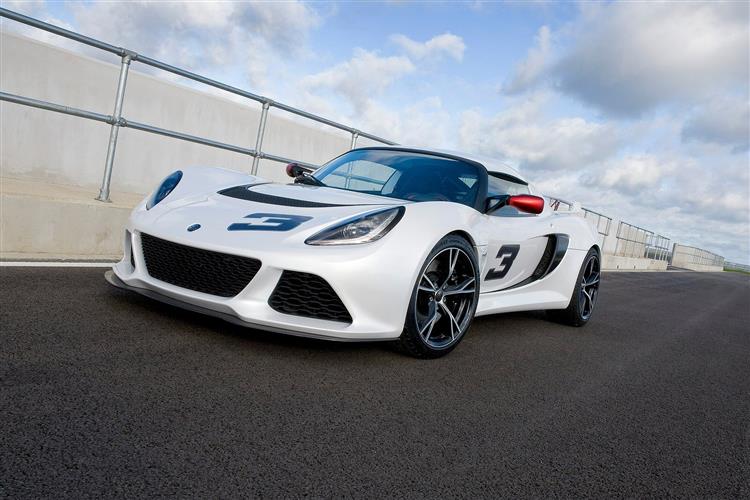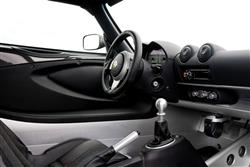HETHEL'S TRACK STAR (some text hidden) --NONE--
By Jonathan Crouch
Introductionword count: 55
For enthusiasts, the Lotus Exige is a precision weapon, a car which had bold dynamic claims to make in more powerful V6-engined third generation form. Designed by people who knew how to develop and set up true driving machines, this was a sportscar like no other. But does it make sense as a used buy?
Modelsword count: 12
(3.5 turbocharged petrol [S,Cup,Club Racer,350 Sport,380 Sport,410 Sport,430 Cup,390 Sport,420 Sport',430 Cup])
Historyword count: 403
Back in 2012, sportscar makers Lotus knew they had to expand their product line for an appeal beyond hard-core enthusiasts. But it was those very people who had built the brand buying models like the Exige. The Exige in all its forms was a totally focused driving machine that summed up everything this British marque was really about. The kind of car that Lotus founder Colin Chapman used to make. Uncompromising sportscars of course, can take many different forms and back in 2012, Lotus liked to think that it offered a choice to suit the most demanding tastes. The Elise roadster for weekend enthusiasts. The pricier Evora coupe for day-to-day drivers wanting more power and luxury. And this Exige for track tearaways unwilling to compromise or adapt to life on tamer tarmac. Appropriately, the Exige has racing roots, the original version based on the Sport Elise race car that Lotus produced for a one-make championship series in 1999. Raw and uncompromising with a huge rear wing and up to 190bhp from a lumpy old 1.8-litre MG Rover engine, it sold until 2001 and was brilliant, provided you confined it to a race circuit. The need for both more modern power and a car that would be slightly easier to live with brought us the second generation Exige in 2004, driven by a high-revving 1.8-litre Toyota unit, subsequently supercharged to put out as much as 257bhp. But it was still very much a track car first and foremost. You could say the same about this third generation version, launched in mid-2012 in coupe and Roadster forms, but that would be telling only part of the story. Powered by a much pokier supercharged V6 engine, it was bigger and heavier than its 'Series 2' predecessor, but crucially also faster and more satisfying. Everything in fact the Exige ever promised to be, offering the fun and potential open-topped thrills of an Elise with the long distance power and luxury of an Evora. A 'Cup' version was launched in 2014, a 'Club Racer' version in 2015, and a '350 Sport' derivative in 2016. Automatic paddleshift transmission was available from 2015. Faster versions followed; the '380 Sport' in 2017 and in 2018 the '410 Sport' and the '430 Cup'. The final production run was based around three 'Final Edition' variants, the '390 Sport', the '420 Sport' and the '430 Cup'. The 'Series 3' model line sold until 2021.
What You Getword count: 585
You can't double the size of an engine in a car as small and terrier-like as an Exige and expect it not to fundamentally change. Replacing the MK2 model's compact little four cylinder 1.8 with a hulking great 3.5-litre supercharged V6 required of course a bigger engine bay, so a stretch to the back of the car, a longer wheelbase and revised bodywork. The new powerplant also needed a different gearbox and new suspension to carry its weight and transmit its loads through different tyres, wheels and brakes. In other words, though some of the basic underpinnings of this design were carried over from the old 'Series 2' Exige, what we essentially had here was a completely different car. Whether it was also a better looking one will be a matter of personal preference. Design Director Donato Coco's inspiration apparently came from low, wide Group C racing cars, creating a very different shape that was 255mm longer and 75mm wider than before. As one of our colleagues put it at the time, 'the Exige no longer looks like a pugnacious little terrier that's going to hang off your trouser leg. Instead it's morphed into something a bit more sensual and elegant'. Personally, we preferred the look of the little terrier but this MK3 car was certainly more visually sophisticated, even if it was rather needlessly fussy around the rear. Getting in and out remains something of a gymnastic feat, thanks to the combination of the high sills and the low roof line which will make the cockpit a tight fit for taller drivers. Should you take exception to this yet still somehow want an Exige, with this MK3 version there was the option of doing away with the roof altogether and opting for a separate Roadster version. Yes, an open-topped Exige. In either of this model's first two generations, such a thing would have been faintly ludicrous as the end result would essentially have been nothing more than an Elise. With this MK3 model though, there was clear justification for a roofless version and the result was very pretty indeed, if simplistic with a manual soft top you've to clip on and off. Mind you, that'll be a small price to pay for getting a more intense Exige experience. Whichever body style you choose, it won't help if your own body style is somewhat portly, the cabin offering wonderful body-hugging front seats that clamp you into place. Still, once you're installed behind the non-adjustable wheel, it's surprisingly comfortable even on longer trips, provided you don't mind the constant engine drone that'll loudly accompany progress if you get a car whose original owner didn't pay extra for sound insulation, carpets and floor mats. These items shouldn't have been optional. Nor should rear parking sensors (without which tight spaces are near-impossible to negotiate) and air conditioning to combat the way the cabin heats up from the engine just behind. We also wish Lotus had offered a bespoke luggage set, for the cargo bay out back in this Series 3 model turned out to be even smaller than before at just 98-litres, the problem exacerbated by the fact that there's no significant stowage room inside the cockpit. Still, you didn't expect this to be a practical choice did you? Could it be better finished and more day-to-day useable? Yes. Would we in some small way have been a little disappointed if it had been? Yes. This is a race car at heart and it should feel like one.
To see the full road test text contact us on 0330 0020 227
Pictures (high res disabled)

.jpg)
|
.jpg)
|
.jpg)
| |||
.jpg)
|

|
Scoring (subset of scores)
Category: Convertibles
| Performance | |
| Handling | |
| Comfort | |
| Space | |
| Styling, Build, Value, Equipment, Depreciation, Handling, Insurance and Total scores are available with our full data feed. | |



